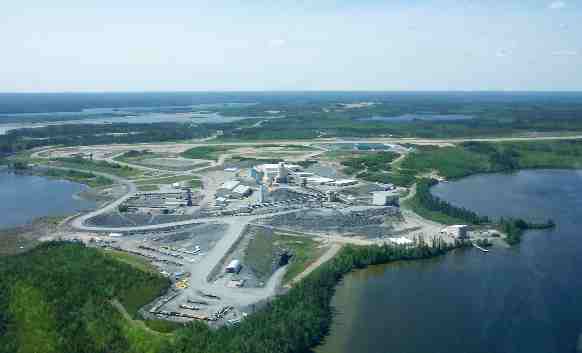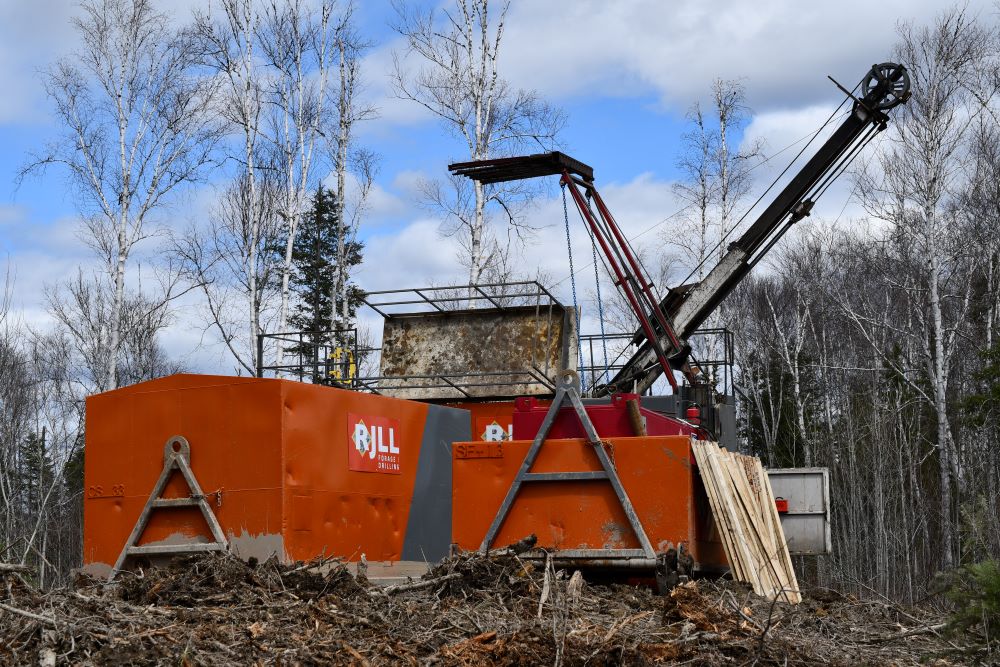CMJ takes the pulse of the aggregate industry in Canada
It’s not an exaggeration to say that the high standard of life in this country depends on the extractive sectors – including the aggregate sector.
The sector supplies the sand, gravel and crushed stone that’s used for all types of construction: roads, highways and bridges, residential housing, office buildings, and other structures.
However, the importance of the sector is largely unrecognized by much of the population.
“We continue to be challenged by the public for permitting,” says Paul Allard, executive director of the British Columbia Stone, Sand and Gravel Association (BCSGA). “We haven’t done a very good job of educating the public on the importance of the aggregate industry to promoting the good life they’re living out here in B.C.” It’s not just in B.C. that the sector is underappreciated.

Sandvik CH550 portable plant. (Credit: Sandvik)
A recent survey by the Ontario Stone, Sand & Gravel Association (OSSGA) showed just how unpopular quarries are as community development projects. The survey asked 1,000 Ontario residents how they felt about four different types of development projects: windmills, aggregate operations, big box retail stores, and bio-waste facilities.
As reported by industry publication Rock to Road, 52% opposed sand and gravel operations – the highest of any type of project, with urban populations more opposed than rural.
The association has rolled out a pilot “GravelFacts” marketing campaign based on the results to counter misperceptions about the environmental impacts of pits and quarries.
A lot of the opposition to quarries centres around their unavoidable proximity to the markets where their products will be used – usually urban and suburban communities.
Being more visible than mines makes aggregate operations a target for NIMBY groups.
But the industry is stepping up its efforts not just to educate the public, but also to be a good neighbour.
The Alberta Sand & Gravel Association (ASGA), for example, encourages municipalities to collect a levy of 25¢ per tonne.
“We recommend the funds go into making sure that our impact on the community is mitigated and also be used as general funds to help the town develop,” says ASGA executive director John Ashton.
The association also works with members on reclamation projects, and operates a truck registry program that allows people to report gravel trucks that may not be behaving properly on the road.
Norm Cheesman, executive director of the OSSGA, notes that the aggregates sector is becoming more focused on working through issues at the municipal level.
“There is such a divergence of regulations and bylaws,” he says. “The relationships with the municipalities are really, really important.” The OSSGA, along with the Top Aggregate Producing Municipalities of Ontario (TAPMO), is calling for an increase in aggregate levies to 54¢ per tonne. The current levy in Ontario is only 11.5¢ compared with Alberta’s 25¢ and 53¢ in Quebec.
“If we are successful in getting increases in fees, there will be more revenues for the municipalities to support their infrastructure needs,” Cheesman explains.
The two organizations are also coming together to discuss issues that are important to communities, such as hours of operation, and wear and tear on roads.
While the associations are increasingly engaged at the municipal level, they also lobby their respective provincial governments on proposed regulatory and legislative changes.
In B.C., Allard’s members have concerns about the implementation of the province’s Water Sustainability Act, which was passed in 2016. The act requires existing operations that use groundwater to wash aggregate to reapply for permits. However, not one had received permits as of mid-February, Allard said, despite applying over a year ago.
In Ontario, the OSSGA is keeping an eye on the Aggregate Resources and Mining Modernization Act, which was before committee at presstime. One of the main concerns with the act is it could give the minister the power to require further studies from existing, permitted sites, creating uncertainty around reserves and the book value of companies.
New restrictions on extracting aggregates have also been proposed under the Co-ordinated Provincial Plan Review, which deals with land-use planning in southern Ontario.
“Our concern is that if they go ahead with the changes as they initially proposed, we’re going to basically be sourcing aggregate from 200 miles away instead of close to market,” Cheesman says.
Potential infrastructure boost As the economy goes, so does the aggregates sector. Where the housing, retail and commercial construction is strong and big infrastructure projects such as pipelines, mass transit extensions or upgrades, or new highways are being built, the sector is more robust.
In Canada, the market is very segmented with demand lower in the Atlantic provinces and stronger farther west, especially in British Columbia. B.C.’s strong housing market and infrastructure projects such as the $3.5 billion George Massey Tunnel replacement, are expected to keep the market buoyant. Other provinces, such as Alberta and Ontario are expecting aggregate demand to remain more or less flat this year. One thing that could have a big booster effect on the sector is government infrastructure spending, which tends to cause spikes in demand for aggregate.
The federal government has pledged to spend a total of $186.7 billion on infrastructure over 12 years, including new and existing projects.
In addition, it announced the creation of the Canada Infrastructure Bank last year.
The bank is expected to invest $35 billion – $20 billion of that new money – into infrastructure projects through loans, loan guarantees and equity stakes, and should be up and running by the end of 2017.
Some provincial governments have also promised new infrastructure spending, and while infrastructure money tends to be slow to actually be distributed and spent on projects, with provincial elections coming up this year in B.C. and next year in Ontario, the provinces could see more money flow.
Equipment Trends Regardless of the market, aggregates producers are always trying to improve their cost per tonne.
This is driving current trends in the market, with operators looking to increase their capacity by buying just one or two pieces of new equipment says Sandvik’s Daoust.
“More and more now customers want to optimize their plants,” he says. “They’re looking for very high-production crushers so they can just do a quick modification of their existing plant, remove the existing crushers and add newer technology crushers – high performance, higher power and of course more capacity and more reduction.” The other driving factor is that regulations for aggregate specifications have become more stringent over the years, making it harder to produce high-quality aggregate with older technology, says Stephen Dobbler, Sandvik’s product manager for crushing and screening in Canada.
Because of the need to produce specific sizes and shapes to meet customer demand, rather than just crushing the rock as much as possible to liberate metals as in mining, Dobbler notes that the aggregate sector has long been a leader in crushing automation.
“It’s a much more demanding crushing process in the aggregate industry, as well as more demanding screening process, so it requires higher level of attention to ensure that they’re really maximizing their revenue for what they’re putting into it,” Dobbler says.
Now, aggregate producers want the higher level of automation that comes with newer, high-performance technology.
“Operations today want to be able not just to operate their equipment – they want to be able to see what’s happening, how it’s performing, what are the reasons they’re not getting the performance that they expect,” Dobbler says. “The technology now in the market offers a level of automation that provides the kind of feedback that gives them the opportunity to further improve their process and reduce their costs.” Automation systems that include scheduled maintenance features and GPS uplinks to track equipment in real time are also increasingly being offered to aggregate clients, Dobbler says.
In addition to efficiency, safety is another big concern in the industry, says Matthew Hanson, business development, mining, at Superior Industries, a leading supplier of conveyors.
“Right now, safety is one of the largest driving factors – the safer you can make any type of crushing, conveying, seems to be a very good thing.” Hanson says that includes guarding to keep people away from machinery or to keep material from a conveyor from falling on people or equipment.
And to counter the dust and noise that can serve as irritants to the neighbours there are products like Sandvik’s telescopic chute.
“It’s pretty tough to dampen the noise of a crusher, but there are different ways to build shelters around to dampen the noise or to put encapsulation to keep the dust within a confined area and dust collection,” Daoust says. “So it’s not necessarily through changes to the crusher itself or to the screen itself, but it’s more with the components around them we can deal with these problems.”





Comments